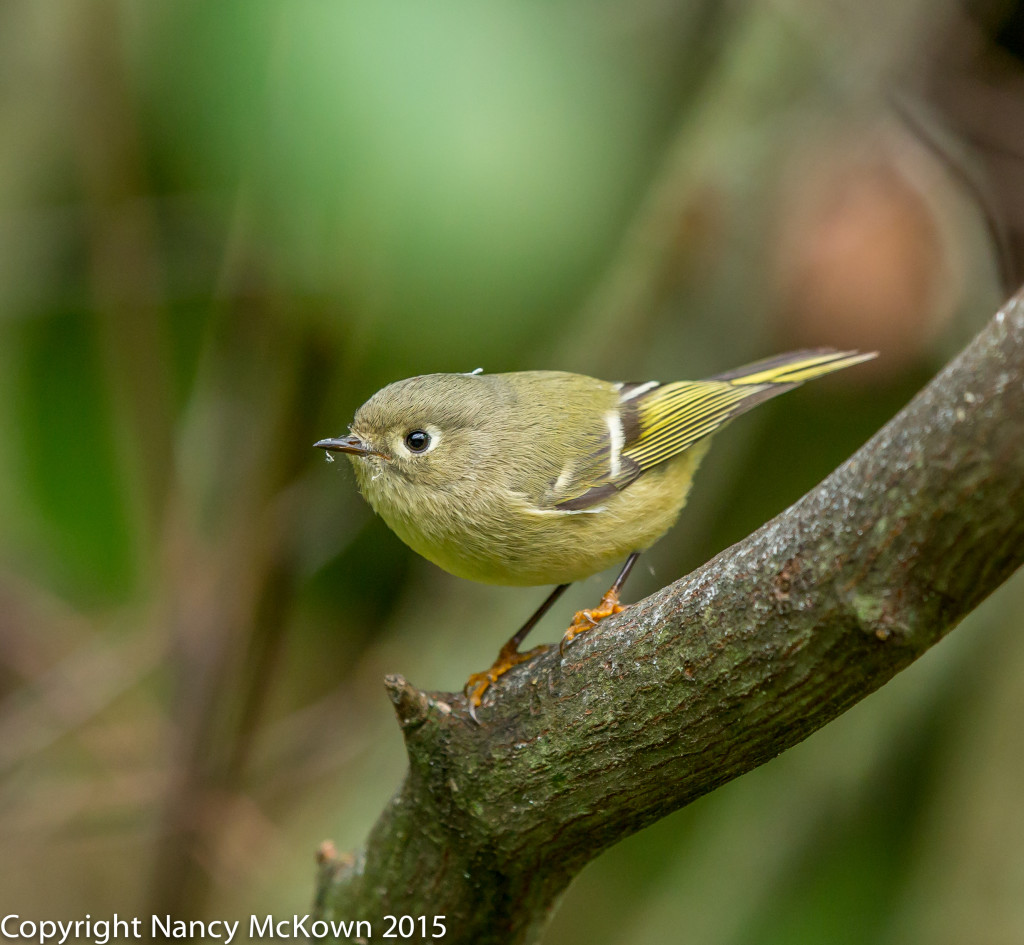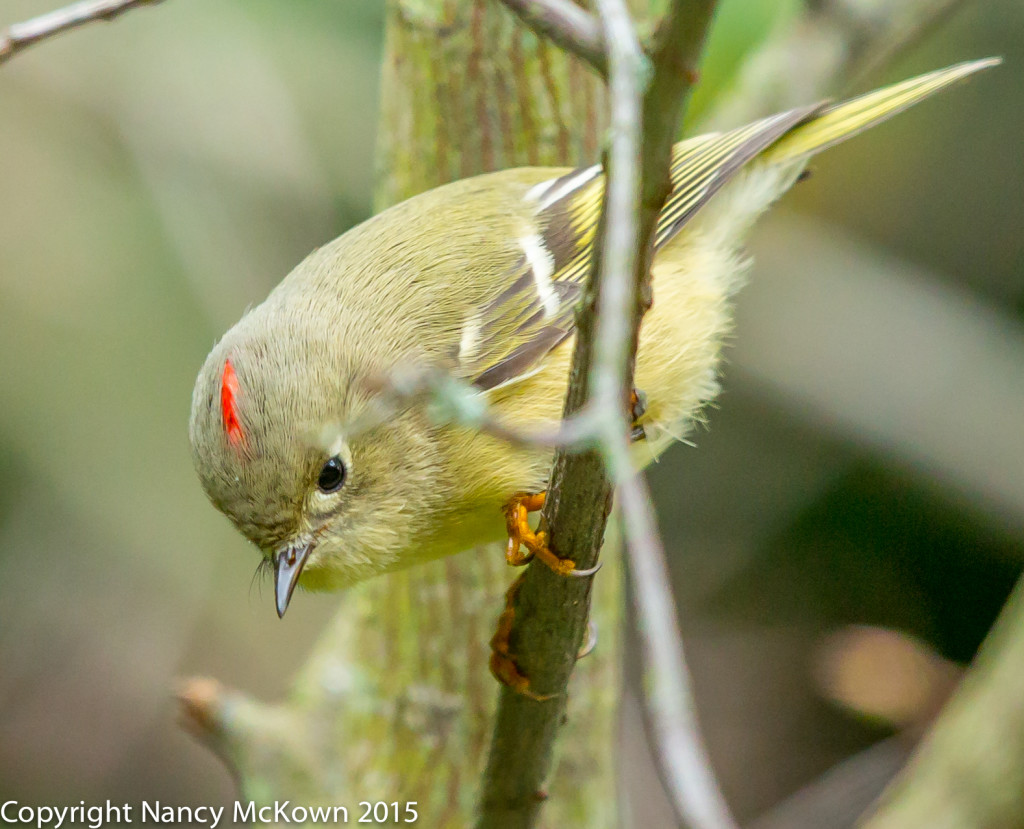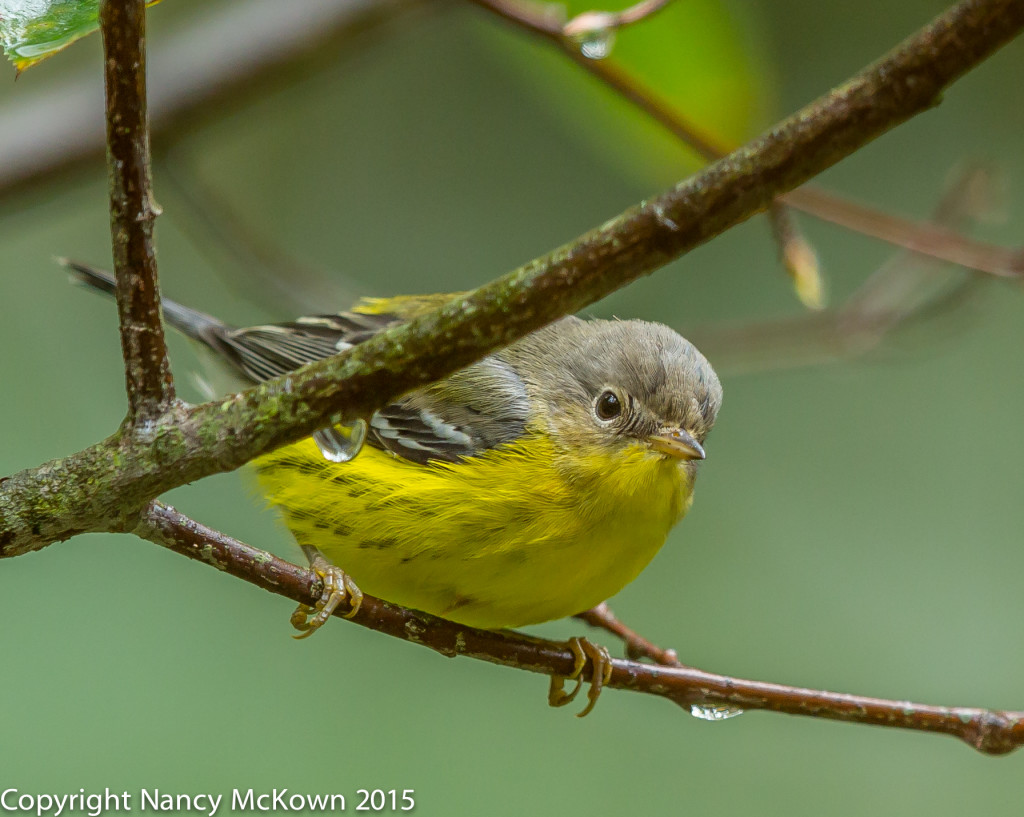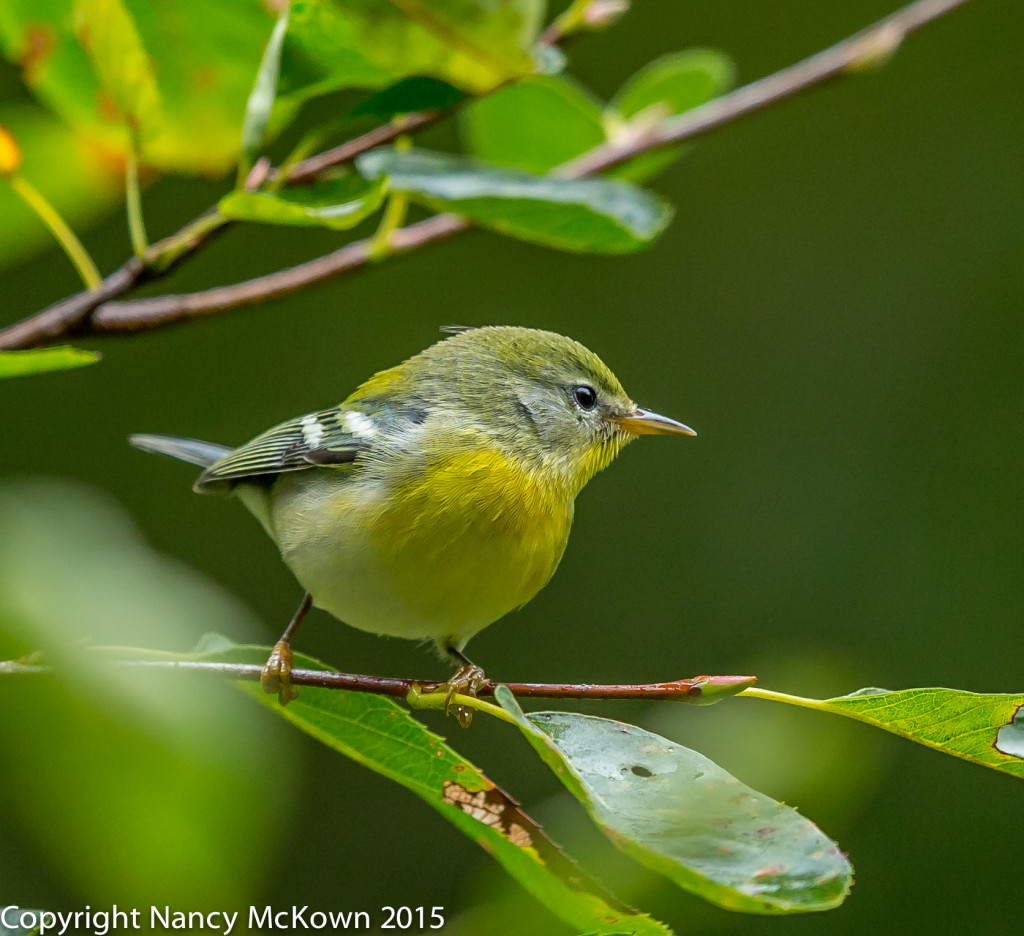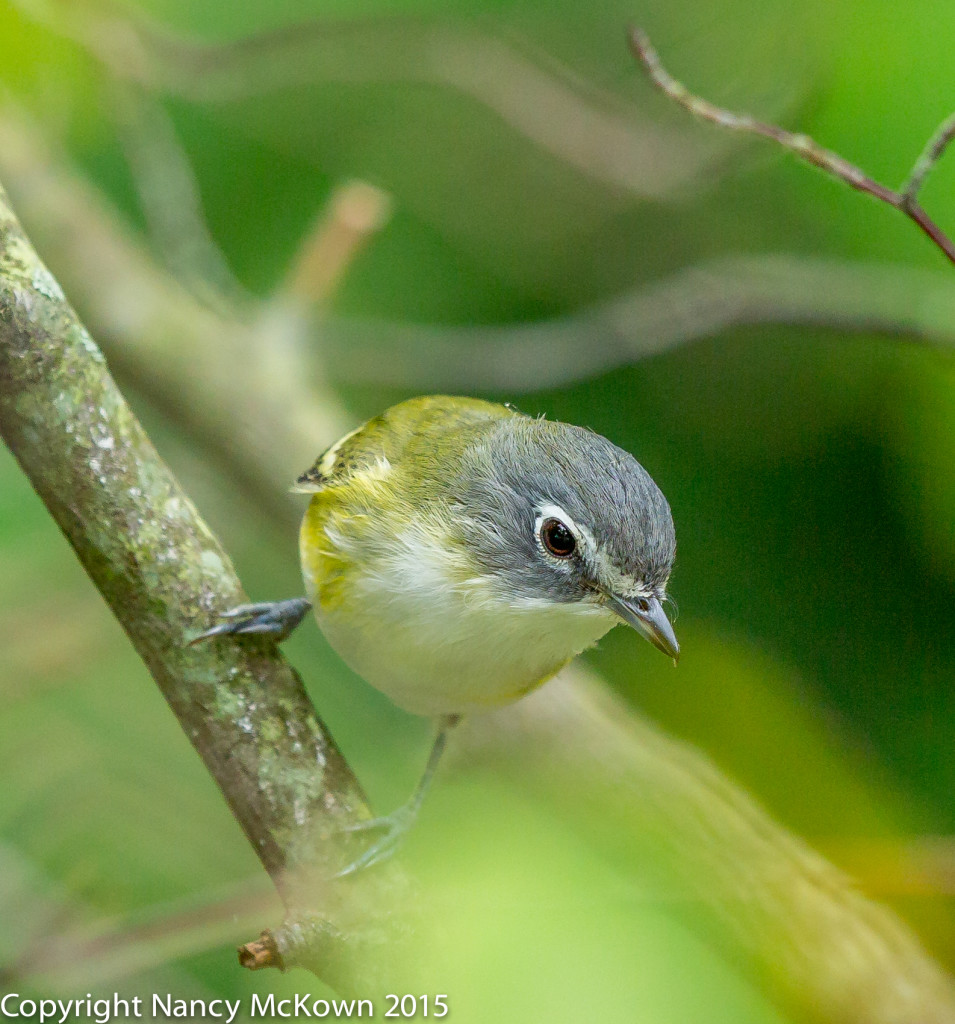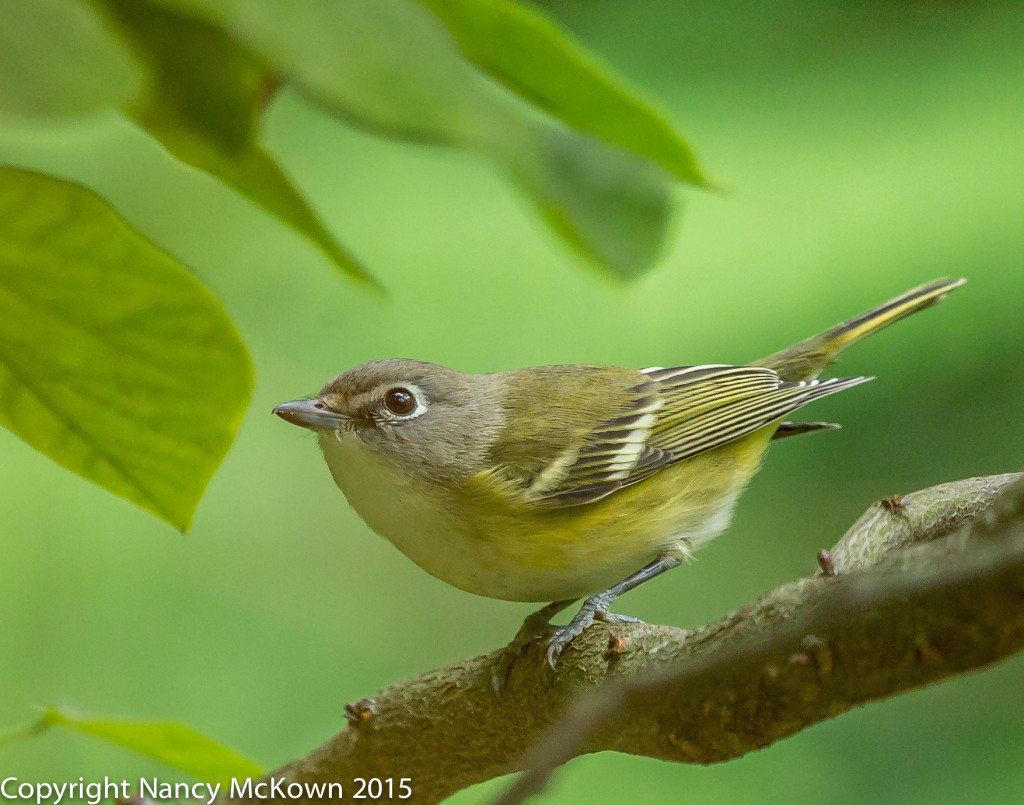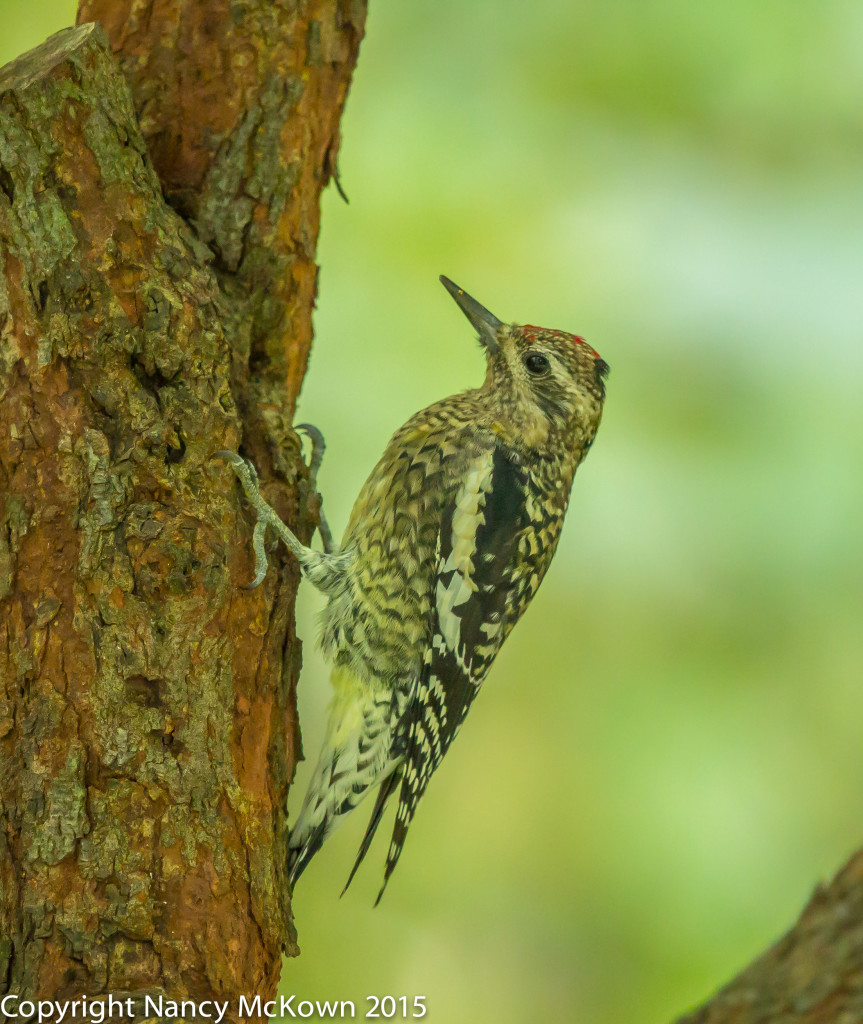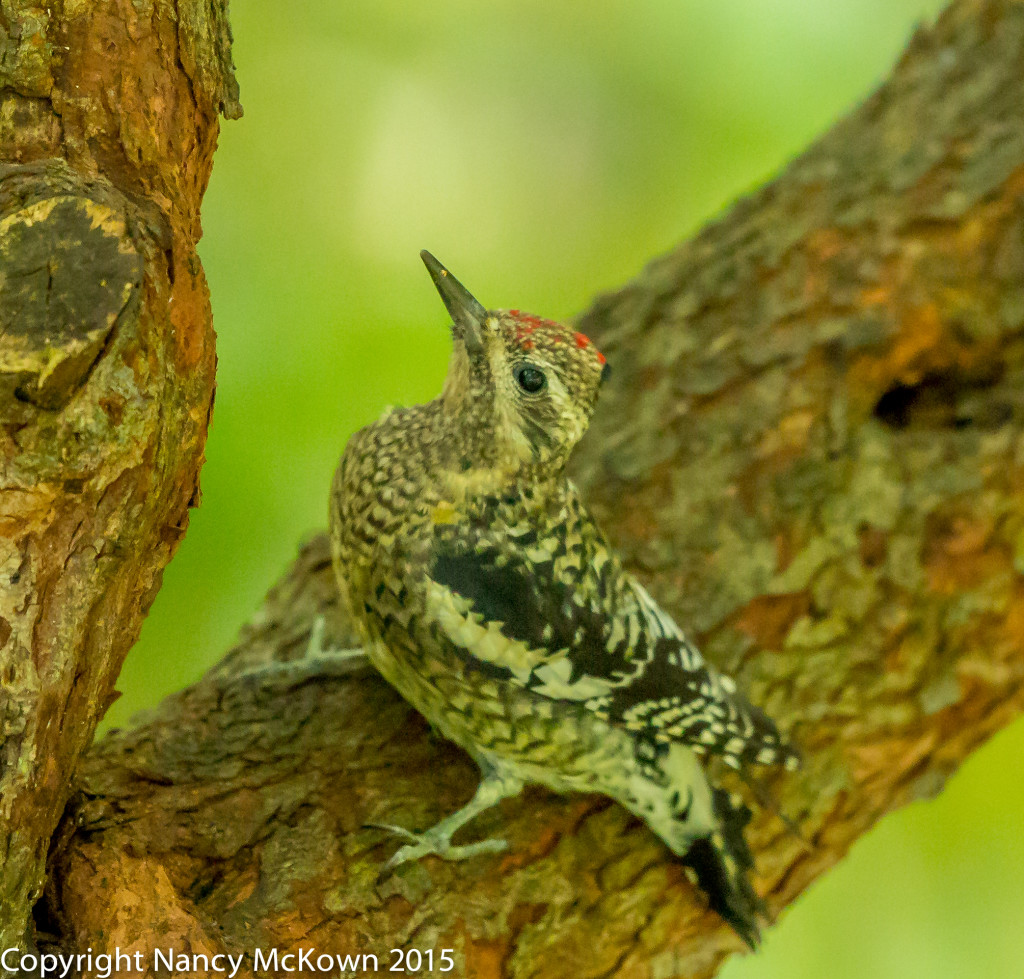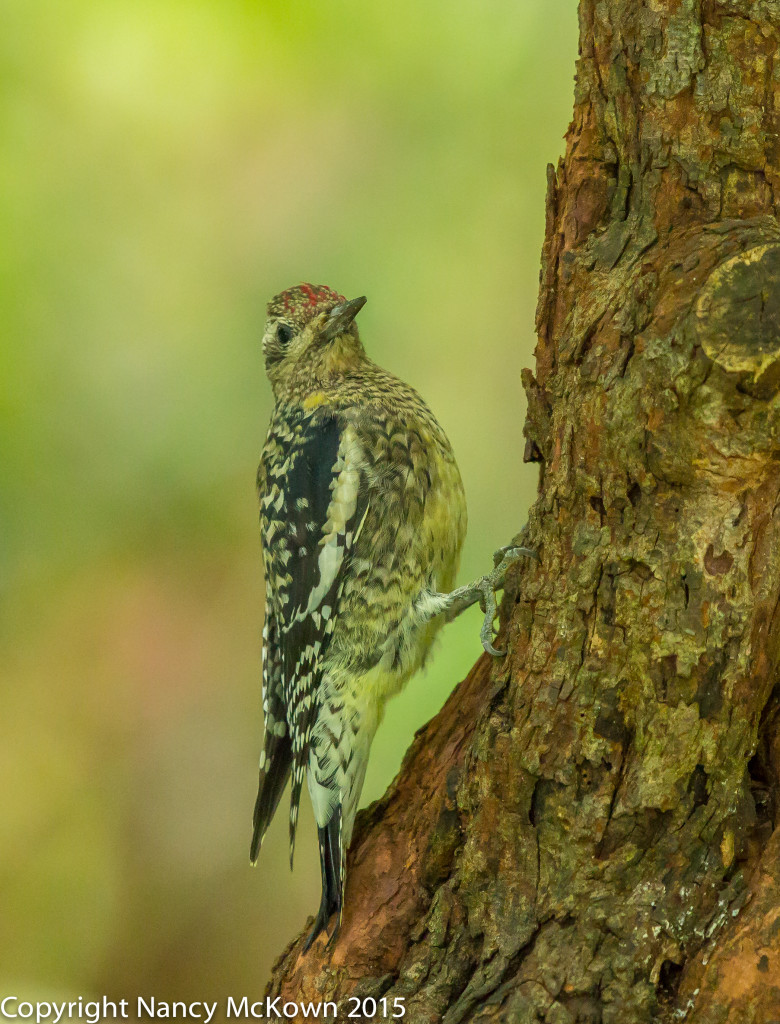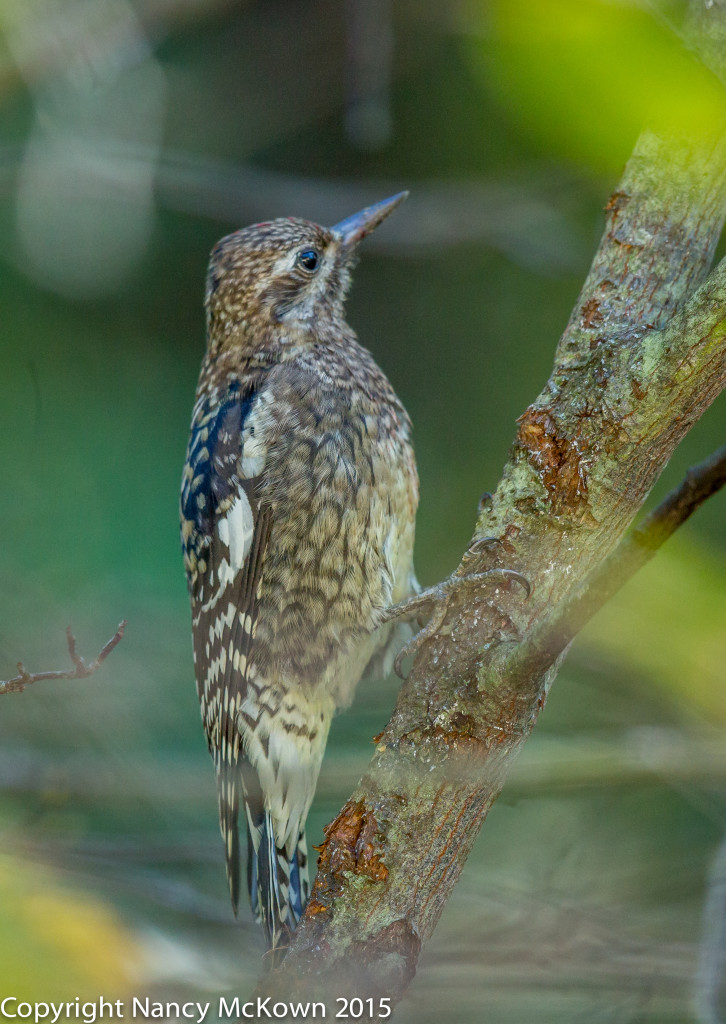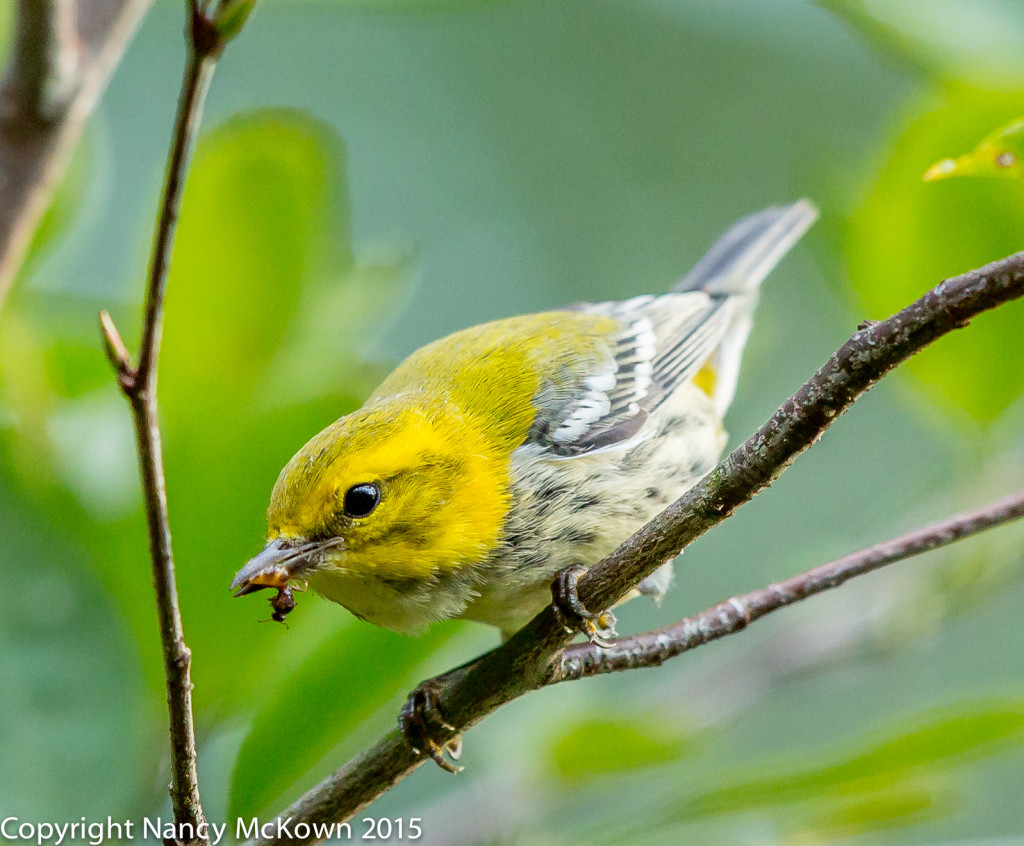
Not Much of a Black Throat- Possibly a Female.
A More Balanced Light in the Background.
ISO1600; f/4.5; 1/640 Second
Overpowering Background Light
I photographed this Black Throated Green Warbler in late afternoon on a bright day when the bird was perched high in the Serviceberry tree. My lens was pointing up, and I could see the bright patchy sky in the background was confusing the sensor. (See photo below.) The highlight alerts confirmed that these backlights were overexposing the images, rendering certain areas with little or no detail. These colorful warblers don’t come around that often, so I had to quickly adjust exposure to let in less light— but not to the point where the bird registered as too dark. I also had time to switch the metering mode from Evaluative to Partial Metering, which helped the sensor better read the important areas of the image.
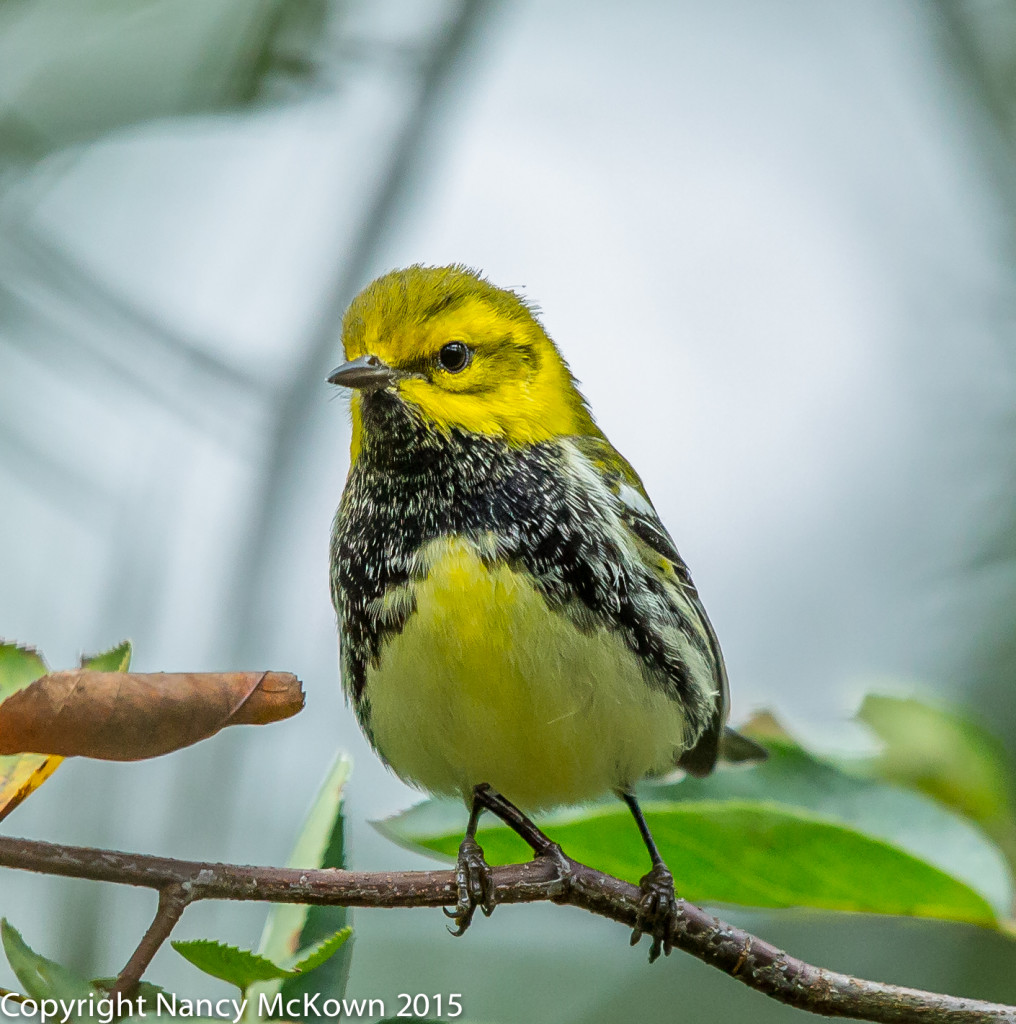
Exposure Adjusted While Shooting and in Post
Processing to Offset Bright Background.
ISO2500; f/5; 1/500 Second.
Highlight Alerts
A Highlight Alert is basically a quick check of overly bright areas (overexposure) on the image. If you have turned on this option on your DSLR, you will see blinking alerts on your review screen after you’ve taken the photo. If the alert is not in an obvious or important portion of the image, the patch of overexposure does not matter. Ignore the blink and stick with the initial exposure readings. If the blinkies cover large areas of the photo, it’s probably best to quickly adjust your exposure settings. If there’s time and opportunity, move to a different location and reshoot.
As happens so often in bird photography, you may be in a situation where you have no choice but to move quickly and precisely and consequently, you have no time or opportunity to check highlights and reshoot. After all, ignoring the highlight alerts may not be a problem, assuming you shoot in RAW and make exposure adjustments in post processing.
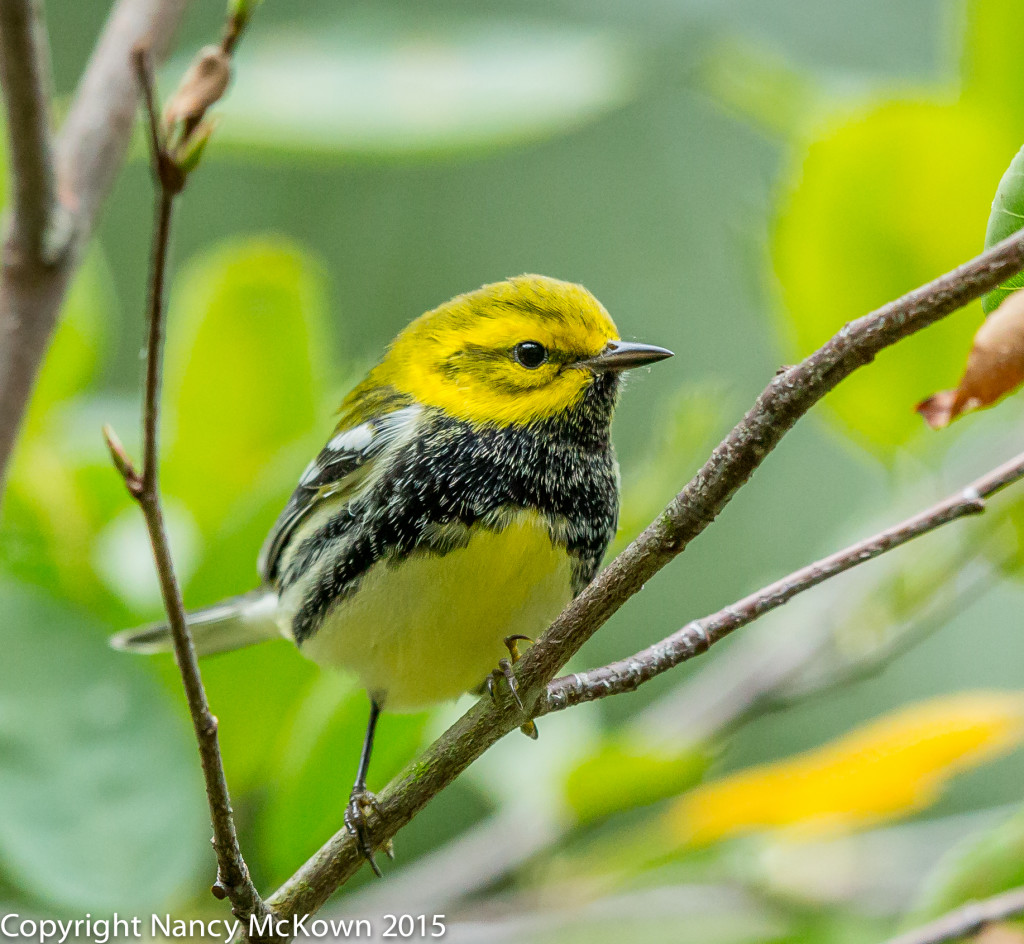
He Hopped down to a Lower Branch, so I was
able to tilt my lens away from the bright background.
ISO2500; f/5; 1/500 Second.
The Thrill Can Be Distracting
The more time I spend behind the camera, the more adept I am at recognizing when harsh background light will cause a problem with the sensor correctly gauging exposure. Nevertheless, I keep the highlight alerts on my camera turned on because the excitement of photographing a new bird can distract me to the point where I’m not paying attention to conditions that can mess up exposure readings.
The best way to check overall exposure while in the field is by checking and correctly reading the histogram. See this post for more information.
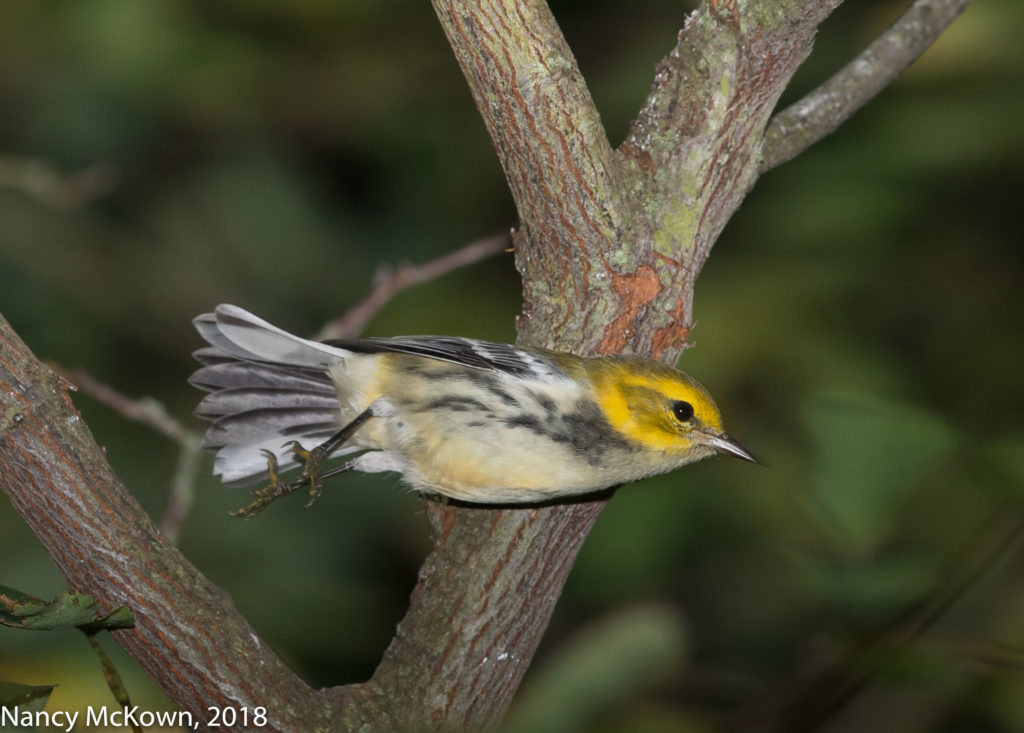
With Flash. Photographed in Fall, 2018
ISO400; f/7.1; 1/200 Second
